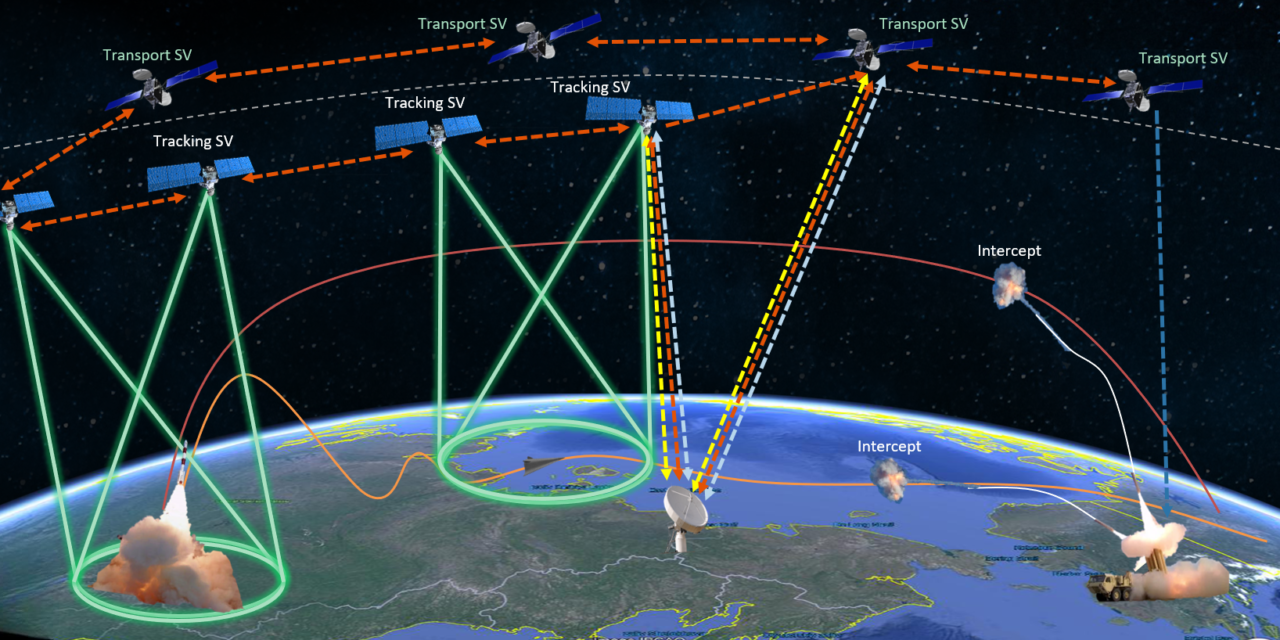Artificial Intelligence (AI) significantly enhances the efficiency of missile interception and tracking by improving detection, decision-making, and response capabilities. Through advanced algorithms and real-time data processing, AI addresses the complexities of modern missile defense, including hypersonic threats, saturation attacks, and countermeasures. Here’s how AI improves missile interception and tracking:
1. Enhanced Detection and Tracking
A. Rapid Data Processing
- AI processes vast amounts of data from multiple sensors (e.g., radar, infrared, satellites) in real time, allowing for quick detection of incoming threats.
- Example: AI-powered radars can identify missile launches within seconds, reducing response times.
B. Improved Accuracy
- AI algorithms filter out noise and false positives, improving the accuracy of detection systems.
- Example: Differentiating between actual missiles, decoys, and clutter in complex environments.
C. Multi-Sensor Fusion
- AI integrates data from various sources (land-based radars, space-based sensors, and naval systems) to create a comprehensive and real-time picture of the battlespace.
- This unified view enhances tracking and targeting precision.
2. Real-Time Target Prediction
A. Trajectory Prediction
- AI analyzes missile trajectories based on real-time data, predicting their future paths and potential impact points with high precision.
- This allows defense systems to pre-position interceptors for optimal engagement.
B. Hypersonic Threat Tracking
- Hypersonic missiles are challenging due to their speed and maneuverability. AI can adapt to their unpredictable trajectories by continuously recalculating their paths.
3. Improved Target Discrimination
A. Decoy Identification
- AI uses pattern recognition and machine learning to distinguish between warheads, decoys, and debris.
- This capability reduces wasted interceptors and increases the likelihood of neutralizing the actual threat.
B. Prioritization of Threats
- AI ranks incoming threats based on their danger levels, ensuring high-priority targets are engaged first.
- Example: Prioritizing a missile heading for a critical asset over less critical threats.
4. Faster Decision-Making
A. Autonomous Engagement
- AI automates parts of the decision-making process, such as selecting interceptors, optimizing launch sequences, and determining the best engagement point.
- This reduces human reaction times and improves the system’s ability to counter fast-moving threats.
B. Adaptive Responses
- AI systems learn from past engagements to refine future decision-making, adapting to new or unexpected scenarios.
5. Countering Complex Attacks
A. Managing Saturation Attacks
- AI enables defense systems to handle saturation attacks involving multiple missiles or drones launched simultaneously.
- By allocating resources efficiently, AI ensures interceptors are used effectively without overloading the system.
B. Overcoming Electronic Warfare
- AI can detect and mitigate jamming or spoofing attempts by adversaries, maintaining reliable tracking and targeting.
6. Optimizing Interceptor Performance
A. Flight Path Optimization
- AI calculates the most efficient flight path for interceptors, minimizing fuel use and maximizing the probability of a successful interception.
- Example: Adjusting the trajectory mid-flight to adapt to a maneuvering target.
B. Multi-Kill Capabilities
- AI supports interceptors equipped with multiple kill vehicles (MKVs), coordinating their deployment to neutralize multiple warheads or decoys in a single engagement.
7. Training and Simulation
A. Advanced Simulations
- AI generates realistic simulations of missile threats, enabling defense operators to train in complex scenarios.
- Example: Simulating hypersonic missile attacks with dynamic trajectories and countermeasures.
B. System Testing and Validation
- AI is used to test and optimize missile defense systems under various operational conditions, identifying weaknesses and improving performance.
8. Integration with Multi-Layered Defense Systems
A. Unified Defense Networks
- AI coordinates different layers of missile defense (e.g., space-based sensors, midcourse interceptors, and terminal-phase systems) for seamless operation.
- Example: Sharing tracking data between Aegis, THAAD, and Patriot systems for comprehensive coverage.
B. Interoperability Across Nations
- AI enables interoperability among allied nations’ defense systems, ensuring real-time data sharing and joint responses to global threats.
9. Continuous Improvement Through Machine Learning
A. Learning from Engagements
- AI systems analyze past engagements to improve detection, tracking, and interception strategies.
- Example: Refining algorithms to counter new hypersonic or stealth technologies.
B. Predictive Maintenance
- AI monitors system health and predicts maintenance needs, ensuring missile defense systems are always operational.
10. Future Innovations with AI in Missile Defense
A. Hypersonic Defense
- AI will play a critical role in tracking and intercepting hypersonic missiles by leveraging real-time data and predictive algorithms.
B. Space-Based AI Systems
- AI-powered satellites will enhance global coverage and real-time tracking of missile threats.
C. Swarm Defense
- AI will manage coordinated responses to swarms of drones or low-cost threats, optimizing interceptor usage.
Conclusion
AI transforms missile interception and tracking by enabling faster, more accurate, and more efficient responses to increasingly complex threats. It enhances every aspect of missile defense, from early detection and trajectory prediction to countering saturation attacks and hypersonic missiles. As threats evolve, AI’s role in missile defense will continue to grow, ensuring robust and adaptive protection against emerging challenges.
Hashtags
#AIInMissileDefense #SmartDefenseTech #AIForInterception #AdvancedAIInDefense #AIInTrackingSystems #SmartTrackingTech #AIForMissileTracking #RealTimeThreatDetection #AIEnhancedSurveillance #PrecisionTrackingAI #InterceptionOptimization #EfficientInterceptionTech #AIInThreatNeutralization #SmartInterceptionSystems #NextGenInterceptors #AutonomousDefenseSystems #AIInDecisionSupport #AIForTargetPrioritization













